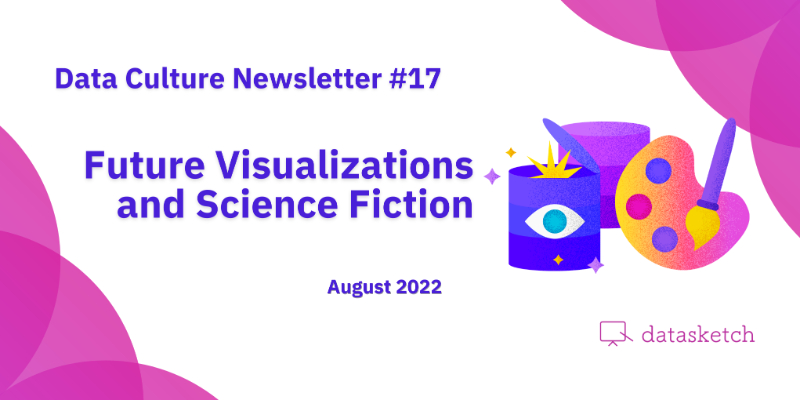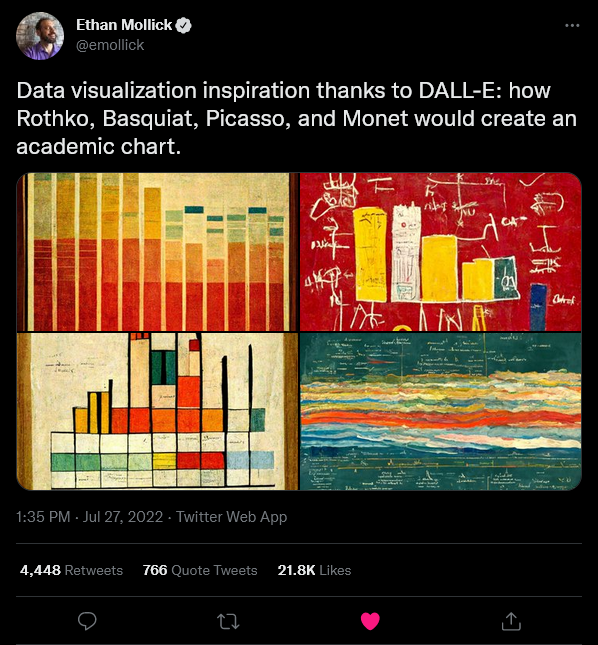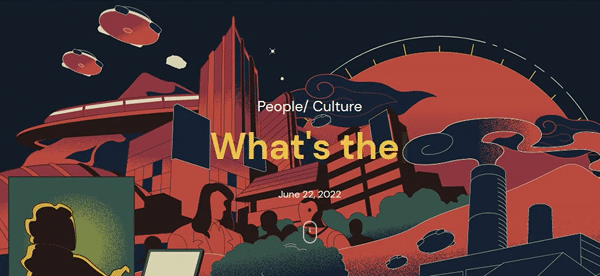Future Visualizaciones and Science Fiction - Data Culture #17
Artificial intelligence gives a glimpse of new ways of visualizing. Also, we inaugurate a new section with a data journalism project that rescues Asian science fiction by reflecting on possible scenarios.
Available in:

The future is closer than we think. Perhaps Dewey, from “Malcolm”, was right when he told his father, Hal: “The future is now, old man”. This issue shows you how artificial intelligence has been used to create visualizations. This action may glimpse a futuristic union between data and art. We also inaugurate the section “Intemporālis”, where we rescue a data journalism project that revisits Asian science fiction by reflecting on possible future scenarios.
Visualizations with artificial intelligence
Ethan Mollick used DALL-E, an artificial intelligence neural network trained to generate images from textual descriptions, to create visualizations referencing artistic movements and expressions.
This experimentation resulted in several bar and area charts inspired by the works of artists such as da Vinci, Bosch, Cézanne, and Haring. Others were based on monoliths, manuscripts, and coats of arms or allude to Brutalist architecture, Art Deco design, and the films of Wes Anderson and Studio Ghibli.
Jason Forrest, editor-in-chief of the Data Visualization Society’s Nightingale review, responded to the Twitter thread in which Ethan shared his project. He also tried visualizing with artificial intelligence and wrote about it. Both point to this type of intelligence as a great source of inspiration and agree about its potential in the future of visualization.

Source: Ethan Mollick | Twitter.
Intemporālis: Asian science fiction.
We have created the roving section “Intemporālis” for projects that are not recent but maintain relevance and merit disclosure for their quality. It is a Latin word that translates to timeless, something that transcends time. We inaugurate this space with the Asian science fiction collection from Kontinentalist.
The special starts with a lush narrative that showcase the alternate worlds and other topics that Asian science fiction creators have addressed. These individuals have challenged the exploration and intergalactic travel stereotypes, which usually come with Asian clichés, such as clothing, food, martial arts, and symbols.
The selection of works has a scatterplot that points out the typical topics. Some belong to the “kaiju” genre, which deals with hypothetical post-war radiation scenarios and combines futuristic ideas with reflections on the countries' institutions.

Source: Kontinentalist
Data Film: The Street Network - The Street Network
The documentary “The Street Network” by Stripe Press, directed by Emile Meier Bokaer, follows the evolution of a group of gamers in Cuba. To play online, they created their own do-it-yourself Internet connection, which now serves most of the cities on the island.
The “SNET” network went from being science fiction, as one of its users says, to connecting people. Indeed, our present was once a set of ideas considered fictional. The nodes facilitated integration through games and social networks to give a sense of community.
📹 See more
Five things we like
- 🙋🏾♀️ FemTech: My body, my data, their rules | Eticas Foundation. Report on the data collected by the most used menstruation apps in Spain and which of them respect privacy the most.
- 🧑🏽🎤 A cross-database of notable people, 3500 BC-2018 AD | Research article that recounts the process behind the database of 2 290 000 notable people worldwide from Wikipedia and Wikidata edits.
- 🎤 Mapping Glastonbury | Victoria and Albert Museum. Interactive map of the visual, sound, and memorabilia archive of the Glastonbury music festival in England.
- ⚽ A comprehensive FIFA World Cup database | Joshua C. Fjelstul. With the Qatar 2022 World Cup three months away, this clean and verified database comes with 27 datasets from tournaments from 1938 to 2018.
- 🌿 Electrifying rhythms in plant cells | Daniel Damineli on Twitter. Research article on the rhythms or oscillations on all spatiotemporal scales generated by plant cells.




